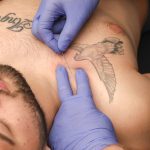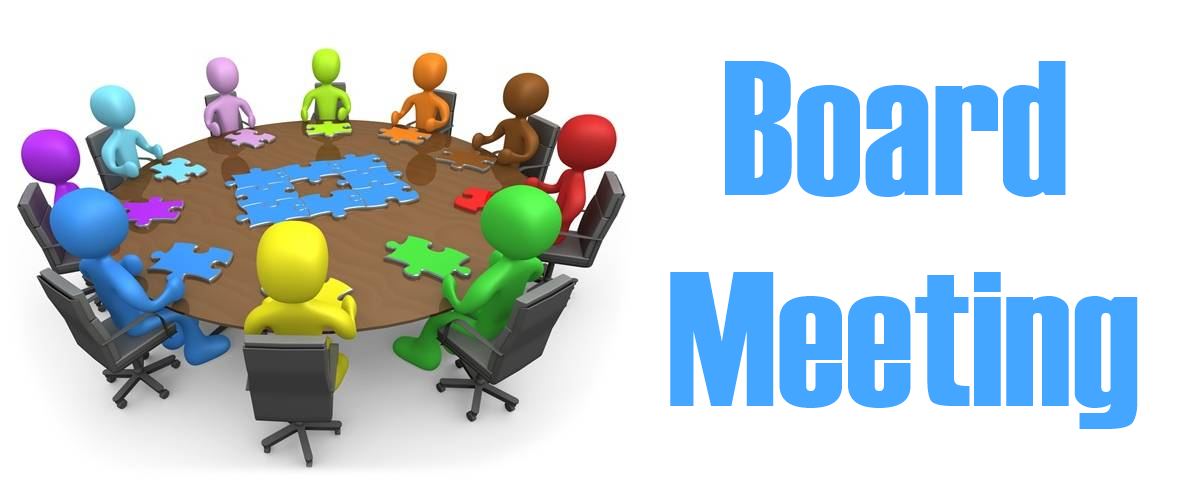To our surprise, apparently there are physical therapists in Maryland who somehow believe that Myopain Seminars and Jan Dommerholt pushed the new Maryland dry needling regulations through the system, because the new regulations would give us a financial windfall.
This essay aims to give an overview of what we have done to prevent the new regulations to go into effect from 2009 through 2018. Our financial interests were never part of our rationale and our actions and indeed, many times, we made recommendations to the contrary. In fact, frequently we have objected to many aspects of the new regulations.
Inservice at the Board Meeting in Baltimore
In 2009, Jan Dommerholt was invited by the Maryland Board of Physical Therapy Examiners to present a lecture about Dry Needling and Acupuncture during the November 2009 Board meeting. The PT Board had also invited the Board of Acupuncture. After the presentation, a brief discussion and Q&A, Jan Dommerholt invited each member of the Acupuncture Board to visit our clinic to see first-hand how we use dry needling as part of a comprehensive PT approach. None of the Acupuncture Board members followed up on this invitation. Instead, the Acupuncture Board filed a motion with the Attorney General of Maryland.
The Attorney General’s Statement
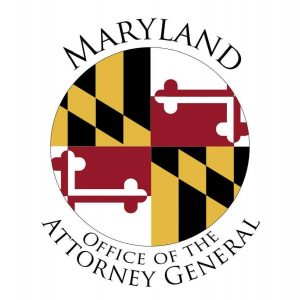
Following the release of the Maryland Attorney General’s Position Statement on August 17, 2010 (click here), the Maryland Board of Physical Therapy Examiners set up an informative meeting in Frederick, MD. Jan Dommerholt and Michelle Finnegan attended that meeting. During the meeting, the Board stated that the Attorney General had indicated that the Board would need to set up regulations requiring at least 200 hours of education.
Jan Dommerholt, supported by chiropractor Dr. David Fishkin from Rockville, MD, expressed concerns about the interpretation of the Board that indeed 200 hours would be required. At that point in time, 46 to 54 hours was more or less the standard in other states. The AG stated that “In developing any such standards, the Physical Therapy Board should consider the standards the Legislature has established for physicians who “perform acupuncture., and, “…….any rulemaking process adopted by the Physical Therapy Board would presumably need to consider standards and restrictions at least as stringent as those imposed on physicians.” Jan Dommerholt pointed out that the AG referred to the process, but nowhere in the AG’s opinion did the AG actually stipulate that a minimum of 200 hours would be required.
During the Frederick meeting, representatives of the AG’s office assured those in attendance that the AG did mean that a minimum of 200 hours would be required, even though in our interpretation the AG did not specifically say so. The Board added that physical therapists would already have completed many of the 200 hours during PT School.
Informal Q&A Sessions

During the next few years, the Chairman of the Maryland Board of Physical Therapy Examiners met informally with Jan Dommerholt at various times and locations, such as our Bethesda physical therapy office and even during the APTA CSM conference in San Diego, CA. While the Chairman never provided any information about what kind of regulations the Board intended to develop, he did ask many questions ranging from minimal required hours of training prior to dry needling to current research findings, among others.
With respect to the minimum number of hours, Jan Dommerholt recommended to not exceed 64 hours of training, which was based on the adverse events dry needling study by Brady et al published in 2014 (Brady, S, McEvoy, J, Dommerholt, J & Doody, C, 2014. Adverse events following dry needling: A prospective survey of chartered physiotherapists. J Manual Manipul Ther 22:134-140). Jan Dommerholt is one of the co-authors of the study; participants in the study had completed 63 hours of dry needling education.
Inquiry of the Attorney General of Maryland
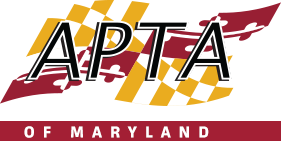
During a Dry Needling Task Force meeting of the APTA of Maryland in November 2013, Jan Dommerholt suggested that the APTA of MD or its legal representative, would contact the Maryland Attorney General to get clarification of what he actually required with regard to the minimum number of hours of education. By then, the Maryland Secretary of Health and Mental Hygiene had informed the Board that including hours from PT School was not acceptable. In response, the Maryland Board of Physical Therapy Examiners had increased the minimum number of dry needling education to 235. Jan Dommerholt expressed repeatedly to the Board and to the APTA of Maryland that requiring 6 weeks of continuing education before a PT could use dry needling in clinical practice would basically make it impossible for anyone to practice dry needling. Upon further analysis, Jan Dommerholt concluded that he would probably be the only physical therapist in Maryland who would still be allowed to use dry needling in clinical practice.
The attorney of the APTA of Maryland rejected the suggestion to contact the Maryland Attorney General. He informed the APTA of MD DN Taskforce that “we just have to accept the regulations and perhaps in a few years, we can suggest modifications……” Jan Dommerholt pointed out that in a few years, dry needling would no longer be available in Maryland.
A few days after the APTA of MD Taskforce meeting, on November 12, 2013, Jan Dommerholt sent a letter to the Maryland AG, which is reprinted here:
November 12, 2012
Douglas F. Gansler Attorney General, State of Maryland 200 Saint Paul Place Baltimore, Maryland 21202-2021
Re.: Trigger Point Dry Needling by Physical Therapists
Mr. Gansler:
I am writing you regarding your Opinion on Dry Needling, which was issued on August 17, 2010. As a matter of introduction, I am a physical therapist licensed in the State of Maryland (License number 16428) and I am responsible for introducing the first dry needling courses to physical therapists and other healthcare providers in the United States in 1997 together with Dr. Robert Gerwin, MD. We have taught close to 300 dry needling courses in the US and abroad in many countries, including Israel, Taiwan, the Netherlands, Ireland, the UK, Spain, Italy, Chile, Brazil, among many others. I am considered one of the world experts on the topic of myofascial pain, trigger points, and dry needling, and I have published extensively in this field. I have published three books on the topic with a fourth book (Trigger Point Dry Needling; An Evidence and Clinically Based Approach, publisher Elsevier) coming out in January 2013 in addition to close to 80 papers in the scientific literature.
In the summary of your Opinion, you stated that “the authority to use acupuncture needles for therapeutic purposes is not necessarily reserved exclusively to licensed acupuncturists” and that “the Physical Therapy Board may determine that dry needling is within the scope of practice of physical therapy if it conducts rulemaking under the State Administrative Procedure Act and adopts a regulation that relates dry needling to the statutory definition of practice of physical therapy.” Furthermore, you stated that “any such process should consider standards for education and training that presumably would be at least as strict as those set by the Legislature for physicians who use acupuncture needles for similar therapeutic purposes.
In the body of the Opinion, you expanded on the educational and training requirements. “The Physical Therapy Board should consider the standards the Legislature has established for physicians who ”perform acupuncture.” The practice of dry needling, as described in the materials provided to us, appears to be indistinguishable from the definition of “perform acupuncture” in the Maryland Medical Practice Act.” Furthermore, “under the Medical Practice Act, a physicians must obtain at least 200 hours of instruction and meet other conditions….” Furthermore, “any rulemaking process adopted by the Physical Therapy Board would presumably need to consider standards and restrictions at least as stringent as those imposed on physicians.”
I am of the opinion that there is quite a lot of confusion regarding the regulations of dry needling. The Physical Therapy Board has interpreted your Opinion that the education and training of physical therapists in dry needling must consist of at least 200 hours of education. In its proposed regulations, the Physical Therapy Board included hours from the core education and training of physical therapists, to which Dr. Joshua Sharfstein, MD, Secretary of Health and Mental Hygiene, objected for being inconsistent with the prescribed training for physicians.
With all respect, it seems to me that the confusion started with your interpretation of dry needling. I am not questioning the need for regulation, as there are indeed dry needling course programs that likely will not meet any reasonable requirements set forth by the Physical Therapy Board. While descriptions of dry needling look similar to definitions of performing acupuncture, in my humble opinion, this should not be interpreted to mean that the education and training of physicians performing acupuncture and physical therapists performing dry needling needs to be equivalent. I noted that you used the carefully selected word “presumably” in your conclusions. Of interest is that physicians in Maryland use dry needling techniques without any additional education and training. If the education and training in dry needling of physical therapists would include the same number of hours of the education and training of physicians performing acupuncture, would that mean that physical therapists can perform acupuncture upon completion of the education and training? I do not believe that is what you envisioned when you issued your Opinion.
I agree that the Physical Therapy Board should consider the standards and restrictions for physicians performing acupuncture. There is a significant difference, however, that seems to be overlooked. If we consider the Harvard University Structural Acupuncture program for example, which is one of the premier physician education programs for acupuncture, it is obvious that acupuncture training for physicians cover a much broader focus than dry needling by physical therapists. The program consists of 300 hours of education and includes Pain Control, Hormonal Imbalances, OBGYN Problems, GI Disorders, Scar Treatments, Structural and Orthopedic Problems, Cardiac and Vascular Disorders, Autoimmune and Autonomic Disorders, Mood Disorders, Auricular Acupuncture, and Myofascial and Neuroanatomic Treatment. Most of these topics are not in the scope of PT practice, including hormonal imbalances, OBGYN, GI disorders, mood disorders, cardiac and vascular disorders, autoimmune disorders, and auricular problems. When I consider what percentage of the total number of hours the physicians acupuncture study overlaps with the scope of PT practice, I would propose that to be no more than about 20 percent.
No one should promote the myth, that sticking a needle in a patient is a very complex procedure for physical therapists, who have spent the majority of their doctoral training in studying the musculoskeletal system. After teaching close to 300 dry needling courses worldwide, I can assure you that 60-75 hours of training is more than adequate, which corresponds to the percentage of the Harvard acupuncture program for physicians, that overlaps with the scope of practice of physical therapy. Dry needling by physical therapists is nothing but a manual therapy technique, which does not equal or even approximate the broad scope of acupuncture.
I do realize that the Physical Therapy Board needs to protect the public. Last week, my Irish colleagues and I submitted a prospective study to the journal Manual Therapy of the adverse events associated with dry needling by physical therapists, who have completed my dry needling training in Ireland. The training consists of 64 hours. There were no significant adverse events in 7,629 dry needling treatments offered by physical therapists. The risk of a significant adverse event for dry needling by PTs was calculated to be 0.04%, which is considerably lower than the risk of taking ibuprofen (Brady S, McEvoy J, Dommerholt J, Doody C: Adverse events following trigger point dry needling: a prospective survey of chartered physiotherapists. Manual Therapy. Submitted, November 2012). Since the Physical Therapy Board approved dry needling by physical therapists in 1984, there have been no complaints to any Board in Maryland. In a period of 28 years, dry needling by physical therapists has proven to be a safe and effective technique.
I am aware that the Acupuncture Board has expressed its opinion that “nothing in PT coursework provides preparation for using acupuncture needles”, but this is just not a truthful statement. The most important aspect of safe dry needling is a thorough understanding and appreciation of anatomy. The anatomy education physical therapists have completed far exceeds the training by acupuncturists. Even the acupuncture literature offers support for this. According to Peuker and Gronemeyer (Peuker, E. and Gronemeyer, D: Rare but serious complications of acupuncture: traumatic lesions. Acupunct. Med. 2001, 19(103–108), “serious complications of acupuncture could have been avoided if acupuncturists had better anatomical knowledge.”
At this point in time, the Secretary of Health and Mental Hygiene follows your lead in assuming that dry needling training must consists of at least 200 hours of post-graduate education and training. As one of the most educated physical therapists in dry needling in the world, I am not even sure that I would meet the proposed regulations. This implies, that once the proposed regulations, which include 230 hours of education, go into effect, patients in the State of Maryland will no longer be able to receive dry needling by physical therapists as no physical therapist will be able to meet the demands.
There is no jurisdiction in the entire world that requires over 200 hours of education. Other US states have ruled that dry needling requires 46 (Colorado), 50 (North Carolina and Louisiana), or 54 (Georgia) hours of education and training. The Secretary of Health and Mental Hygiene received about 800 letters in favor of dry needling by physical therapists with the vast majority coming from the general public (patients). I cannot imagine that you envisioned that your Opinion would lead to this disastrous outcome.
I do agree, that the education and training of physical therapists must be regulated by the Physical Therapy Board. I do not agree, however, that the number of hours needs to be the same as the training for physicians performing acupuncture. The scope of acupuncture practice by physicians is not comparable to the focus of dry needling by physical therapists. I welcome your interpretation of this important distinction and hope that you will correct the assumption the Physical Therapy Board has made regarding the required number of hours for physical therapists to use dry needling in their respective practices.
Respectfully submitted,
Dr. Jan Dommerholt, PT, DPT, DAAPM President, Bethesda Physiocare President, Myopain Seminars
A few weeks after sending the letter, on November 29, 2012 the AG of MD replied stating
November 29, 2012
Dear Dr. Dommerholt:
I am writing on behalf of Attorney General Gansler in response to your letter of November 12, 2012, concerning the performance of dry needling by physical therapists. As you note in your letter, the Attorney General offered the opinion in August 2010 that, as a legal matter, the State Board ofPhysical Therapy Examiners could permissibly “determine that dry needling is within the scope of practice# of physical therapy if it conducts rulemaking under the state Administrative Procedure Act and adopts a regulation that relates dry needling to the statutory definition of the practice of physical therapy.”95 Op’ Att’y Gen. 138, 150 (Aug. 17, 2010). The Attorney General further advised that “[a]ny such process should consider standards for education and training that presumably would be at least as strict as those set by the Legislature for physicians who use acupuncture needles for similar therapeutic purposes.” Id. at150-51.
You express concern in your letter that the Attorney General’s August 2010 opinion could be read to “assume” that physical therapists must obtain 200 hours of training before performing dry needling. The Attorney General’s opinion does not suggest or assume that any particular number of hours of training should be required, while it is true that state law imposes a requirement that physicians obtain 200 hours of acupuncture-specific training before they may perform acupuncture, see Md.Code Ann.,Health Occ. $ 14-504, the Attorney General merely advised that the Board of Physical Therapy Examiners should consider requiring education and training for physical therapists comparable in rigor -not specifically in number of hours to the requirements imposed on physicians. Moreover, the Attorney General did not suggest that the Board should consider imposing education and training requirements that are inapplicable to dry needling or the therapeutic purposes for which it is performed.
You also state in your letter that the Secretary of Health and MentaL Hygiene, citing the Attorney General’s August 2010 opinion, has sought to impose a specific requirement of 200 hours of training. In a November 9, 2012 letter to Dr.John Baker, the Chair of the Board of Physical Therapy Examiners, the Secretary expressed concern about a lack of equivalence between the Board’s proposed education and training requirements for physical therapists to perform dry needling and those required of physicians to perform acupuncture. However, the Secretary states that his concerns arise, not from a lack of equivalence in number of hours, but from (a) the lack of ”any quality standards for the training” that the Physical Therapy Board proposes to require of physical therapists equivalent to those quality standards imposed by the Board of Physicians with respect to acupuncture training for physicians, (b) the fact that the Physical Therapy Board’s proposed training requirement “overlaps with the core education requirements for physical therapists,” whereas “the prescribed training for physicians [performing acupuncture] does not,” and (c) a need for”clear explanation from the [Physical Therapy Board] on why it believes the training to be equivalent.” I am attaching a copy of the Secretary’s November 9 letter to Dr. Baker.
Thank you for your letter and for the insights that you have offered on this issue. I have forwarded copies of your letter to Secretary Sharfstein and to Dr. Baker, along with copies of this response.
Sincerely, Joshua N. Auerbach Assistant Attorney General
cc. Joshua M. Sharfstein, Secretary, DHMH John Baker, Chair, Board of Physical Therapy Examiners
A few days after receiving this letter, on December 4, 2012 the Chair and Executive Director of the Board informally thanked Jan Dommerholt in his physical therapy practice.
More Objections
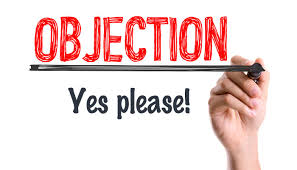
As more details became available about the proposed Dry Needling Regulations, Jan Dommerholt frequently objected to various aspects of the new regulations:
1. Dr. Jan Dommerholt objected to the requirement that 40 hours of theoretical education must be done either “in person at a face-to-face session; or in real time through electronic means that allow for simultaneous interaction between the instructor and the participants.”
It seems bizarre that the Board would not accept online theoretical education. In 2019, It is possible to complete entire graduate education online, while the Board maintains its archaic opinion that online education for the theoretical component of dry needling courses would somehow potentially harm the public. Protecting the public is one of the primary responsibilities of the Board.
Students and graduates from the Myopain Seminars dry needling course programs know that Myopain Seminars requires at-home study of nearly 10 hours of Powerpoint lectures for the DN-1 and 2 courses, which are summarized during the courses with ample time and opportunity to ask questions and have lively discussions. As Jan Dommerholt pointed out to the Board, since the introduction of the online course materials, the passing rate on our theoretical examinations has increased from 76% to 98%.
The Maryland Board of Physical Therapy Examiners has not offered any rationale for this requirement and ignored Dr. Dommerholt’s objection.
2. Dr. Jan Dommerholt objected to the regulation requiring completion of 40 hours of theory and 40 hours of practical instruction before a PT is allowed to use DN in clinical practice.
This makes Maryland the most rigorous state in the country and likely in the entire world! To the best of our knowledge, no other jurisdiction in the world requires this many hours for a physical therapist to use DN. Jan Dommerholt pointed out to the Board, that by not allowing a PT to use DN after the first course restricted to muscles that were taught in the course, the Board may inadvertently have increased the potential of risk of injury. Many PTs take 2-3 years before they can complete 80 hours of continuing education in DN, which means that what a PT learned in the first course is no longer fresh in memory by the time that PT attends the final course. After 23 years of teaching DN courses all over the world, Jan Dommerholt has learned that allowing PTs to use DN immediately after the first DN course makes for safer DN practice.
The Maryland Board of Physical Therapy Examiners has not offered any rationale for this requirement and ignored Dr. Dommerholt’s objection.
3. Dr. Jan Dommerholt objected to the regulation that “a physical therapist shall have practiced physical therapy for at least 2 years before performing dry needling in the State.”
Jan Dommerholt pointed out to the Board that safe dry needling is guided by excellent anatomical knowledge. In our experience, as a rule new graduates possess much better mastery of detailed anatomy than a PT who graduated 10-15 years ago.
The Maryland Board of Physical Therapy Examiners has not offered any rationale for this requirement and ignored Dr. Dommerholt’s objection.
4. Dr. Jan Dommerholt objected to the notion that the Board would not include a grandfather clause in the new regulations., which has many sad consequences for many physical therapists and their patients in Maryland. For example, in 1984, Maryland physical therapist David Shulman petitioned the Board to allow dry needling by physical therapists, which was granted. Mr,. Shulman has included dry needling into his clinical practice since 1984, has taught dry needling courses and as October 1, 2018 is no longer allowed to treat his patients with dry needling, even though in 34 years he has not encountered a single significant adverse events and none of his patients has ever filed a complaint with the Board. Mr. Shulman has a distinguished career as a physical therapist in Maryland, which was of no value to the Board when they limited his clinical practice with the new DN requirements.
Many physical therapists and their patients in Maryland would have benefitted from the inclusion of a grandfather clause. As noted above, several hundreds of Maryland graduates of the Myopain Seminars dry needling course program were at risk of not having enough theoretical hours of education. A simple grandfather clause would have allowed these therapists to continue dry needling without having to resort to attending online webinars or other live dry needling courses.
Jan Dommerholt has advocated for Mr. Shulman and other physical therapists in similar situations. The Maryland Board of Physical Therapy Examiners has not offered any rationale for this requirement and ignored Dr. Dommerholt’s objection.
5. As many graduates in Maryland of the Myopain Seminars dry needling course program were at risk of not having enough theoretical hours to continue dry needling after October 1, 2018, the Maryland Board of Physical Therapy Examiners suggested to Dr. Dommerholt to set up live online webinars which would allow those therapists to make up the difference.
Even though conducting webinars would potentially increase revenue for Myopain Seminars, Dr. Jan Dommerholt objected to the notion of webinars. He argued to the Board that the Board would facilitate a practice pattern comparable to educational sessions offered by the pharmaceutical industry in lush resorts in Mexico and the Caribbean. Physicians were required to sign-in during the morning hours in a room with a tv and a few chairs. After signing in, the physicians could leave the room, go to the beach or swimming pool, go on excursions, etc. and still get educational credit for having attended a workshop.
Similarly, Myopain Seminars has no control over attendance of its webinars. As Jan Dommerholt pointed out to the Board, a physical therapist can register for a webinar, sign-in, leave, and come back 4 hours later to sign out. There is no possibility to assess attendance, yet, the Maryland Board of Physical Therapy Examiners ruled that live webinars are an acceptable form of continuing education to meet the minimal requirements for theoretical education.
The Maryland Board of Physical Therapy Examiners has not offered any rationale for this requirement and ignored Dr. Dommerholt’s objection.
Summary and Conclusions
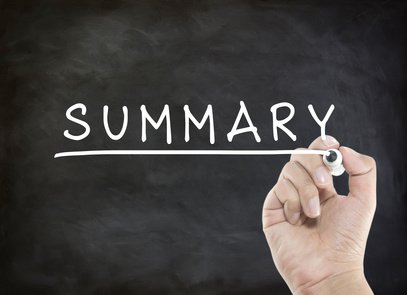
In summary, Jan Dommerholt and Myopain Seminars have continuously advocated for more reasonable dry needling regulations. Almost in every instance, our objections directly opposed our financial interests. We did not have to contact the Attorney General, even though that resulted in a reduction of required hours from 235 to 80. Remember that we advocated for 64 hours of total education! Just imagine, how much money we could have made conducting a 6-week dry needling course program!
We objected to the option of conducting webinars even though in the short term, we could have increased our revenue considerably. At this point in time, Myopain Seminars continues to conduct the DN webinars even though the webinars constitute a financial loss to the company.
To suggest that Jan Dommerholt acted selfishly and only had the financial interests of Myopain Seminars in mind, reflects a dramatic level of ignorance. We encourage anyone who continues to believe that Jan Dommerholt endorsed the new DN regulations for financial gains, to become familiar with the facts. We welcome your direct communication and discussion as there is zero validity to the claims.
Jan Dommerholt will continue to advocate for the right of physical therapists to use dry needling in clinical practice not only in Maryland, but throughout the United States. For the record, in 2018, Dr. Dommerholt support the fundraising efforts of the Colorado APTA Chapter and testified in court in Florida. The Colorado and Florida chapters of the APTA were not charged a penny for Jan Dommerholt’s participation.

